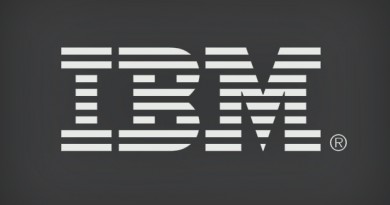Power Distribution Architecture of a Data Center
A traditional power distribution architecture which was developed in the late 70’s is still being used by some of the existing data centers. In this basic system, the main power of the data center is distributed through ‘power distribution units (PDU, with 50kW- 500kW ratings)’. These units have large power transformers which provide voltage conditioning or voltage conversion. The power distribution units are in turn distributed to a quantity of branch circuits (with 1.5kW to 15kW ratings) to the IT equipment, where each IT enclosure uses one or more branches. The wiring to the IT enclosures is usually located beneath the raised floor.
However, when the traditional power distribution system was created, the data centers consisted of a small number of large IT devices which were hardly changed except during the scheduled stoppage of a major IT upgrade. The data centers in the present day have different characteristics that have challenged the traditional architecture, like:
• Constant addition of new power circuits due to the varying power requirements, without disturbing the nearby existing loads.
• With increase in per-rack power density, requirement for multiple branch circuits per cabinet is increased.
• There is no mechanism yet to monitor the circuit overloading above 50% in the commonly implemented dual power path systems.
• Data centers may contain thousands of plug-in devices with separate power cords, instead of a few large IT devices which require several more power receptacles.
• It is very difficult to determine impending overload conditions and to size branch circuits, when a large number of IT devices are connected to a branch circuit breaker
The characteristics of an ideal power distribution system would be:
• No under-floor cables
• Maintenance of capacity and redundancy on every circuit
• Addition or alteration of new circuits can be performed safely on a live system
• All circuits are monitored for power
• Should be able to deploy IT zones and associated power distribution over time
• Excess copper is not installed which is not necessary
• High Efficiency
In accordance with the varying needs of the modern data center, the power distribution systems have been evolving, and over time, various improvements have been introduced to these systems, a few notable ones being:
• Flexible power cords and overhead cable tray
• Less power distribution units of transformers
• Branch circuit metering for power
• High power and pluggable rack power distribution units
• Software for power capacity management
In order to suit a high density data center, the power distribution system should include all the above mentioned elements in its architecture.
The power distribution system has two steps: For larger data centers the main critical bus power from the uninterruptible power supply (UPS) is distributed to IT rows using one or more overhead busways. The busways are installed initially which traverse the entire IT rack layout. When a group of racks is to be installed, a low-footprint modular PDU is installed at the same time and plugged
In place of the traditional circuit breaker panels possessing raw wire terminations, we have the modular PDU that contains a backplane into which pre-terminated shock-safe circuit breaker modules are installed. This varied arrangement results in elimination of on-site termination of wires, and also allows the face of the PDU to be much narrower.
There are no initial branch circuits installed in the modular PDU. The power connection from the PDU to the IT racks comprise of flexible cable which can be plugged into the front of the modular PDU onsite depending on requirement of each specific rack. The branch circuit cables to the IT enclosures are pre-terminated with breaker modules that plug into the shock-safe backplane of the modular PDU.
A few particular equipments like blade servers which require a dedicated branch circuit generally possess a single cable from the PDU carrying either one, two or three branch circuits which directly plugs into the blade server, without any additional rack PDU needed. In case of presence of mixed equipment in the rack, we have the rack PDUs which can provide receptacle and current ratings which are interchangeable.
We encounter situations where we have racks of very high density, or a small group of racks being isolated by shape of the room or other constraints, wherein one or more zones within the data center might require only a small number of branch circuits. In these cases, the full 24-branch circuit capability of the standard modular distribution system is not needed. To overcome this, the architecture includes a smaller version of the modular power distribution unit, which supports up to 6 branch circuits and consumes zero floor footprint are directly mounted into an IT rack. The status and energy monitoring capability of the larger floor unit in a 5U rack mount version is included in the PDU.
The circuits can be further simplified for smaller data centers of 200kW or below, where the modular PDU may be integrated directly with the UPS system into a compact arrangement that can be located in the IT room. The requirement for a main bus wiring and separate power room is eliminated in such a setup.
Constant monitoring of current and energy on every circuit in a power distribution system is required at all levels of hierarchy. Simple network management protocols (SNMP) are used for monitoring the system. Also there is Capacity management software which monitors every circuit in the system and enforces safety margins, identify available capacity and verify redundancy.
Data Center Talk updates its resources every day. Visit us to know of the latest technology and standards from the data center world.
Please leave your views and comments on DCT Forum

